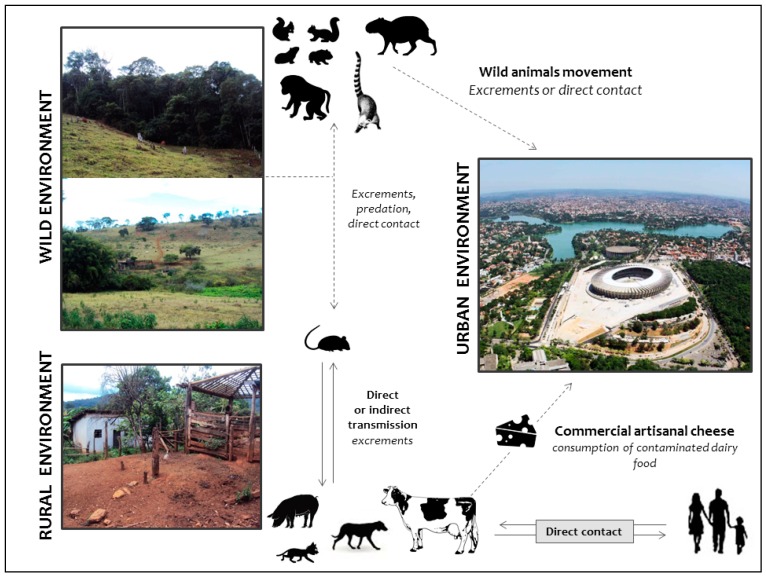Figure 5.
Hypothetical model highlighting the dynamic of vaccinia virus circulation in different hosts from wild, rural and urban environments. VACV outbreaks have been largely described in rural areas, affecting mainly dairy cattle and milkers. Equids have also been affected, although there are no human cases associated with direct contact with horses. Peridomestic rodents have been postulated as the link between bovine vaccinia (BV) outbreaks in dairy farms and VACV circulation in wildlife. Wild rodents could act as VACV reservoirs and transmit the virus to other small mammals, as well as peridomestic rodents, thus maintaining the wild-rural cycle. In urban areas, the dynamic also involves wild rodents that could be in contact with other mammals such as capybaras and coatis. These wild species can interact with domestic animals such as dogs and cats that live in regions bordering green areas (natural parks and forest reserves), which could favor VACV spread and transmission to other domestic animals and humans. Alternatively, VACV could be disseminated to urban areas through contaminated dairy products. Solid lines represent hypotheses already described. Dashed lines indicate new hypotheses pointed out by our group.

